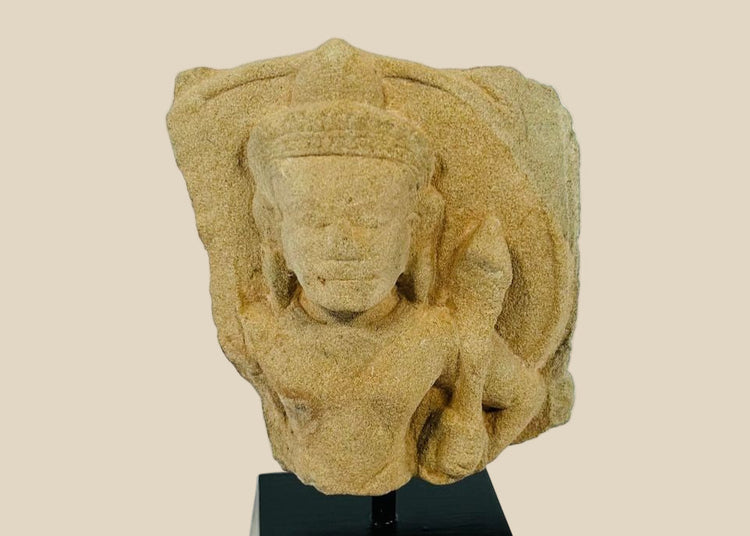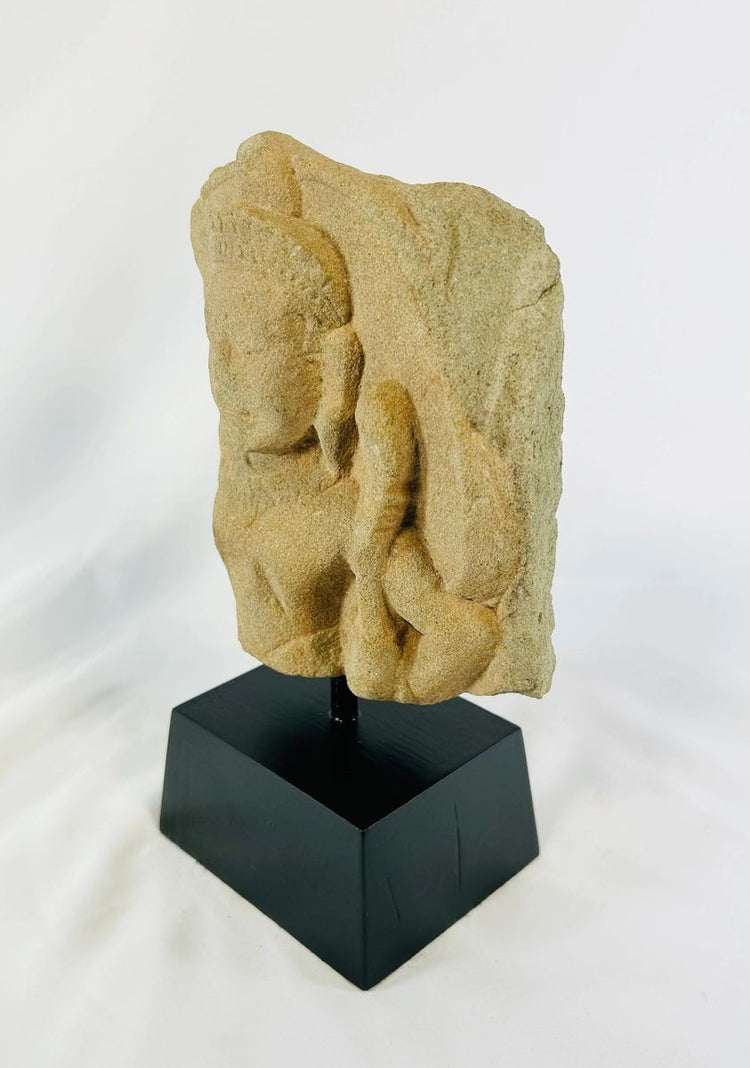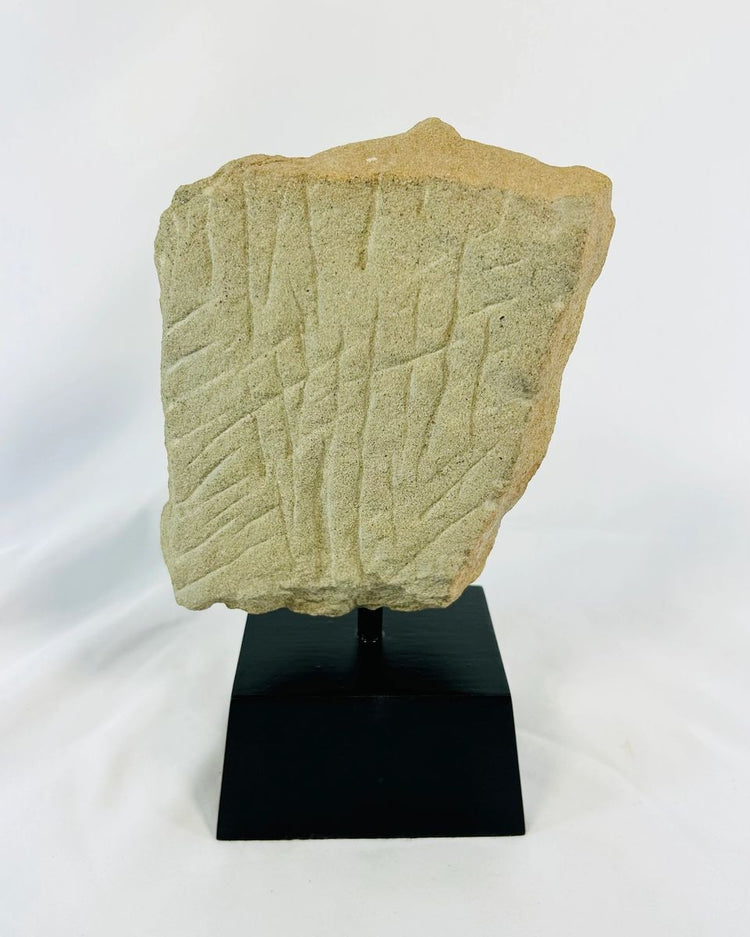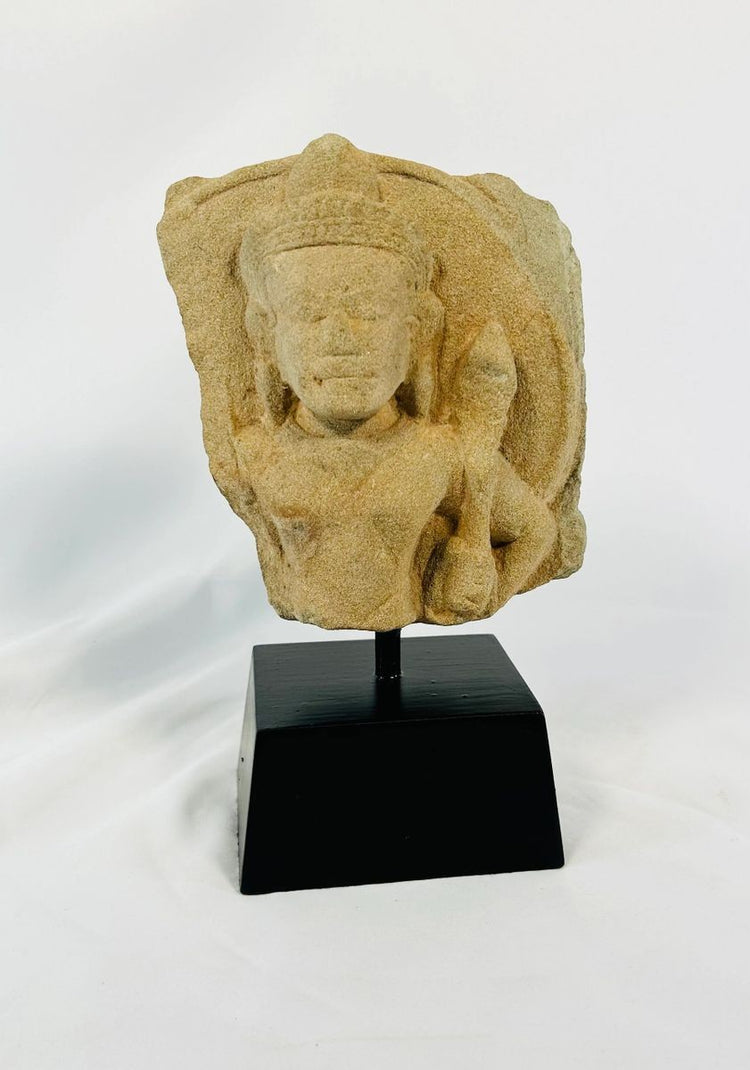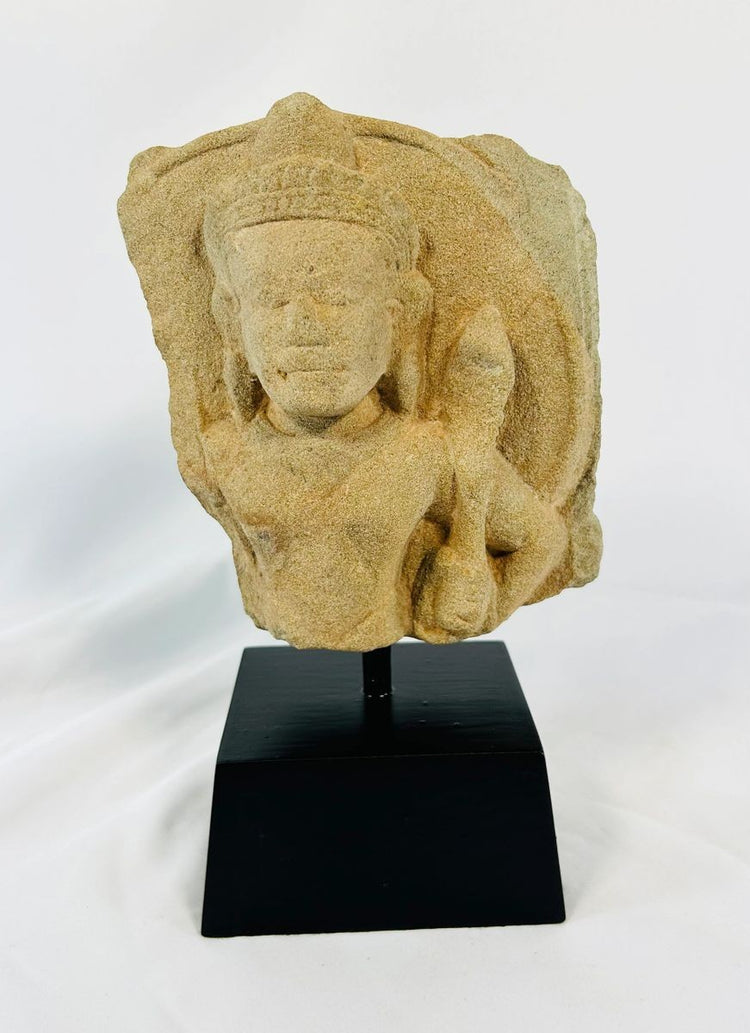Khmer Empire Devotional Fragment | Padmapani (Avalokitesvara) in Carved Stone | 12th Century
Description
More
Less
Historical Context & Origin
Region: Khmer Empire, Cambodia
Material: Carved stone
Period: 12th century CE (Angkor period)
Description
This finely carved stone fragment represents Padmapani (Avalokitesvara), the bodhisattva of compassion, one of the most revered figures in Mahayana and Vajrayana Buddhism. Measuring approximately 6.3 inches by 5.5 inches, the fragment preserves the serene facial features and flowing contours typical of Khmer sacred sculpture. Likely once part of a larger temple relief or devotional figure, it embodies the refined craftsmanship and spiritual depth that flourished under the Khmer Empire at Angkor.
Features
- Intricate depiction of Padmapani, embodying compassion (karuṇā) in Buddhist tradition
- Lotus flower (Padma) symbolism, representing purity and enlightenment
- Graceful proportions and smooth carving, hallmarks of Angkor-era sculpture
- Natural patina and surface weathering attesting to antiquity
- Compact fragment size ideal for display and preservation
Cultural Significance
The Khmer Empire (9th–13th century) was one of Southeast Asia’s greatest civilizations, centered at Angkor in modern-day Cambodia. Its temples and sculpture remain some of the most celebrated works of Asian art. Padmapani, a manifestation of Avalokitesvara, reflects the Buddhist ideal of infinite compassion, guiding practitioners toward enlightenment. Khmer stone carving combined both spiritual devotion and artistic refinement, serving as sacred embodiments of Buddhist teachings within temple complexes and shrines.
Condition
Well-preserved with expected age-related surface wear, enhancing its authenticity. Mounted display recommended.
Dimensions (approximate)
Height: 6.3 in
Width: 5.5 in
Age
12th century CE, Khmer Empire
Description
Historical Context & Origin
Region: Khmer Empire, Cambodia
Material: Carved stone
Period: 12th century CE (Angkor period)
Description
This finely carved stone fragment represents Padmapani (Avalokitesvara), the bodhisattva of compassion, one of the most revered figures in Mahayana and Vajrayana Buddhism. Measuring approximately 6.3 inches by 5.5 inches, the fragment preserves the serene facial features and flowing contours typical of Khmer sacred sculpture. Likely once part of a larger temple relief or devotional figure, it embodies the refined craftsmanship and spiritual depth that flourished under the Khmer Empire at Angkor.
Features
- Intricate depiction of Padmapani, embodying compassion (karuṇā) in Buddhist tradition
- Lotus flower (Padma) symbolism, representing purity and enlightenment
- Graceful proportions and smooth carving, hallmarks of Angkor-era sculpture
- Natural patina and surface weathering attesting to antiquity
- Compact fragment size ideal for display and preservation
Cultural Significance
The Khmer Empire (9th–13th century) was one of Southeast Asia’s greatest civilizations, centered at Angkor in modern-day Cambodia. Its temples and sculpture remain some of the most celebrated works of Asian art. Padmapani, a manifestation of Avalokitesvara, reflects the Buddhist ideal of infinite compassion, guiding practitioners toward enlightenment. Khmer stone carving combined both spiritual devotion and artistic refinement, serving as sacred embodiments of Buddhist teachings within temple complexes and shrines.
Condition
Well-preserved with expected age-related surface wear, enhancing its authenticity. Mounted display recommended.
Dimensions (approximate)
Height: 6.3 in
Width: 5.5 in
Age
12th century CE, Khmer Empire
You May Also Like


















